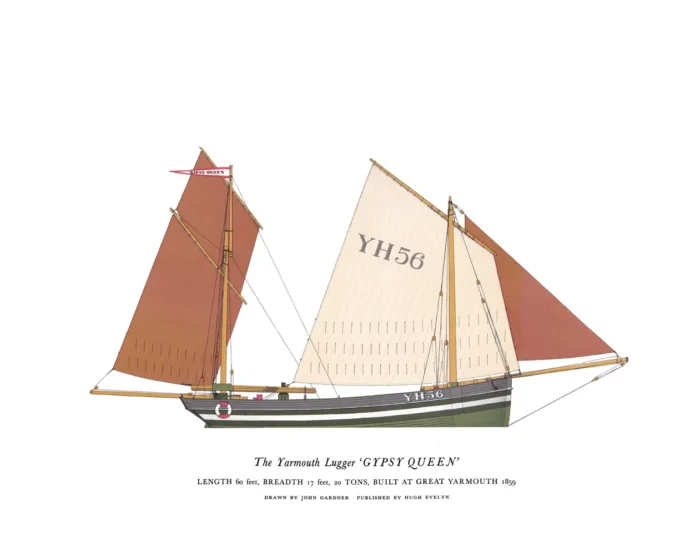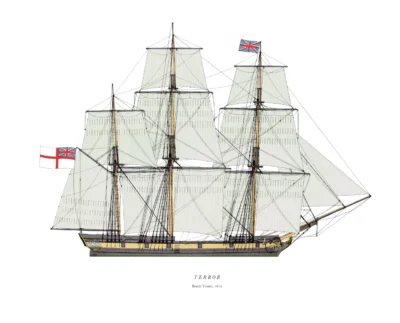Yarmouth Lugger, “Gypsy Queen”, 1889
Original price was: £22.50.£17.50Current price is: £17.50.
Gypsy Queen: Yarmouth Lugger (scroll down for a more detailed Description)
Published 1964 by © Hugh Evelyn Limited; drawn by Scottish marine artist John Gardner (1930-2010)
Size: 43 x 35 cm [17” x 14”] (may vary slightly from printers’ cut 60 years ago)
Printed on white matt cardstock c. 133 g/sm2
Print is LARGE size – shippings LARGE size – shipping is the same for 1 to 10 prints (based on largest print size in your order) – see Shipping & Returns
In stock
Description
Yarmouth Lugger;
Built: Southtown, Great Yarmouth, Norfolk, UK;
Built in: 1859;
20 tons; Leingth: 60 ft (18 M); Beam: 17 ft (5 M);
The lugsail used on fishing craft descended from the square sail. The 3-masted lugger evolved from the square-rigged buss. The end of the 18th century was characterised by smuggling and privateering. Lugger design accelerated to outstrip any revenue ship. The lugsail was loose-footed. With no boom it could be let fly if pressed too hard. Gypsy Queen was a typical mid-century Yarmouth lugger. The main mast disappeared to give more space for net handling. The fore and mizzen masts became larger. Built in 1859 she registered 20 tons, 60 ft long and beam 17 ft. The heavy foremast, stepped in a tabernacle, is rigged with a large dipping lug with three lines of reef points; the tack is hooked to a short iron bar on the stemhead and the sheet is carried well aft to the mizzen thwart. There is no standing rigging and all the support for the mast comes from heavy hemp rope reeving through large blocks. This support comprised a heavy forestay made of a burton, hooked to the stemhead, and a halliard and burton, set up on the weather side of the mast. The halliard had to be shifted over every time the boat went about. The forestay was also used to lower the mast onto its mitchboard (a corruption of midships board). The mizzen mast, also stepped in a tabernacle, set a standing lug. This sail had little of its area forward of the mast and was always set to port irrespective of the tack the vessel was working on. It was sheeted through a single block at the end of the large 31 ft stern outrigger, to a purchase inboard. The topsail completed the normal working canvas on the mizzen. The large bowsprit which could easily be run inboard to rest on the deck.
Additional information
| Weight | 0.0215 kg |
|---|---|
| Dimensions | 44.5 × 35.5 cm |





